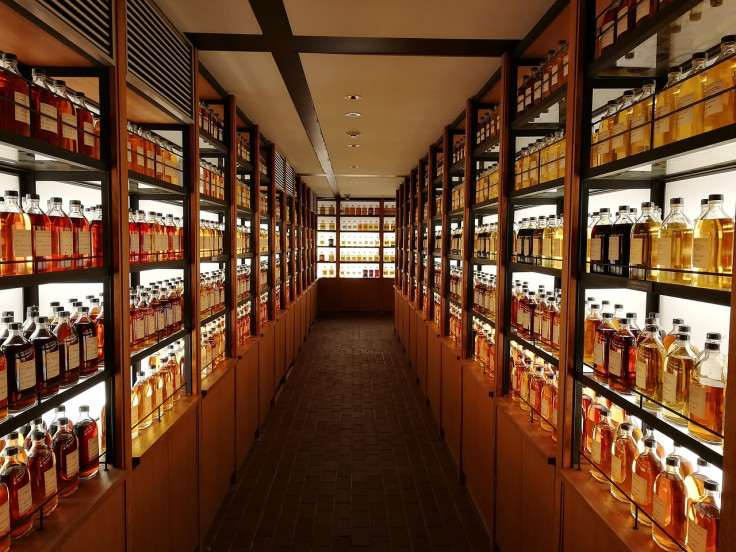$9 Billion Kentucky Whiskey Industry in Trouble With Wave of Bankruptcies: Is TikTok and Tariffs to Blame?
Gen Z's preference for low-ABV options has reduced demand for aged bourbon.

Kentucky's £6.7 billion ($9 billion) bourbon industry, a cornerstone of the state's economy, is facing a sobering reality as multiple distilleries file for bankruptcy amid falling demand, mounting debt, and trade disruptions.
With three major distilleries collapsing in just eight months, the crisis threatens over 23,000 jobs and a £1.2 billion ($1.6 billion) payroll.
But what are the causes of the industry's turmoil, the role of social media trends like TikTok, and the impact of international tariffs.
A Wave of Bankruptcies: Distilleries in Distress
The bourbon bubble is bursting, with LMD Holdings, parent of Luca Mariano Distillery, filing for Chapter 11 bankruptcy in July 2025, citing a 'likely claim of over $25 million' from its largest creditor.
Garrard County Distilling, a £187.5 million ($248 million) facility, entered receivership in April 2025, owing £19.5 million ($25.89 million) to Truist Bank.
Stoli Group, owner of Kentucky Owl, also filed for bankruptcy in late 2024, burdened by £4.1 million ($5.4 million) in debts to Bardstown Bourbon.
Francesco Viola, owner of Luca Mariano, told the Lexington Herald-Leader, 'to maximise the value of the assets for all stakeholders.'
Beyond bankruptcies, industry giants are slashing jobs. Brown-Forman, parent of Jack Daniel's, cut 700 jobs in January 2025, while Green River Distilling eliminated 26 positions, 25% of its workforce.
Diageo paused production at its Lebanon plant through June 2025, affecting more workers.
These closures and layoffs ripple through Kentucky's economy, impacting bourbon tourism, which generated 2.5 million visitor experiences in 2024, and supply chains supporting 21 million bushels of grain.
TikTok and Shifting Tastes: A Generational Challenge
A shift to ready to drink (RTD) cocktails among younger consumers, amplified by platforms like TikTok, is reshaping the spirits market.
@missioncocktails Ready-to-Drink > Bars anytime✨🍸 Who’s with Us? follow @missioncocktails for more cocktail love✨♥️ . . . . . #missioncocktails #readytodrink #readytodrinkcocktails #cocktailsathome #cocktails #manhattancocktail
♬ Write This Down (Instrumental) - SoulChef
Gen Z's preference for low-ABV options like hard seltzers, popularized through viral cocktail trends, has reduced demand for aged bourbon.
The Wall Street Journal noted, 'America's Bourbon Boom Is Over,' as speculative buyers retreat and prices normalize.
Posts on X from @viveklectic reflect this shift: 'Inflation, a shift to canned cocktails among younger consumers, and international tariff threats impacting exports.'
inflation, a shift to canned cocktails among younger consumers, and international tariff threats impacting exports.
— Vivek Singh (@viveklectic) August 4, 2025
- A 2023 study from the Journal of Economic Perspectives highlights that Chapter 11 filings often lead to significant job losses, with the Kentucky bourbon industry
The bourbon boom of the 2000s led to overproduction, with Kentucky's 14.3 million aging barrels, over two per resident, now facing uncertain demand.
This oversupply, coupled with changing tastes, threatens smaller distilleries unable to pivot quickly.
Tariffs and Trade Wars: A Global Squeeze
International tariffs are exacerbating the crisis. Canada, importing £30 million ($40 million) of Kentucky bourbon annually, imposed retaliatory tariffs in 2025 after President Trump's 25% tariffs on Canadian goods, citing fentanyl trade concerns.
Ontario stores pulled US spirits from shelves, costing Michter's Distillery £86,250 ($115,000) in cancelled shipments.
Andrea Wilson of Michter's told NBC News, 'If we're not selling to our largest export market, that's a significant impact.'
The European Union's looming 50% tariff on US whisky, set for late March 2026, could further devastate exports, which fell 35% in 2020 during prior trade disputes.
India's recent reduction of its tariff from 150% to 100% offers some relief, but smaller distilleries lack the resources to shift to new markets like South Africa, as Brough Brothers is attempting.
Smaller producers may explore diversification into ready-to-drink cocktails, while larger firms could lobby for tariff relief.
However, without significant shifts in consumer trends or trade policies, Kentucky's bourbon legacy risks further erosion, leaving communities and workers bracing for more uncertainty.
© Copyright IBTimes 2025. All rights reserved.





















